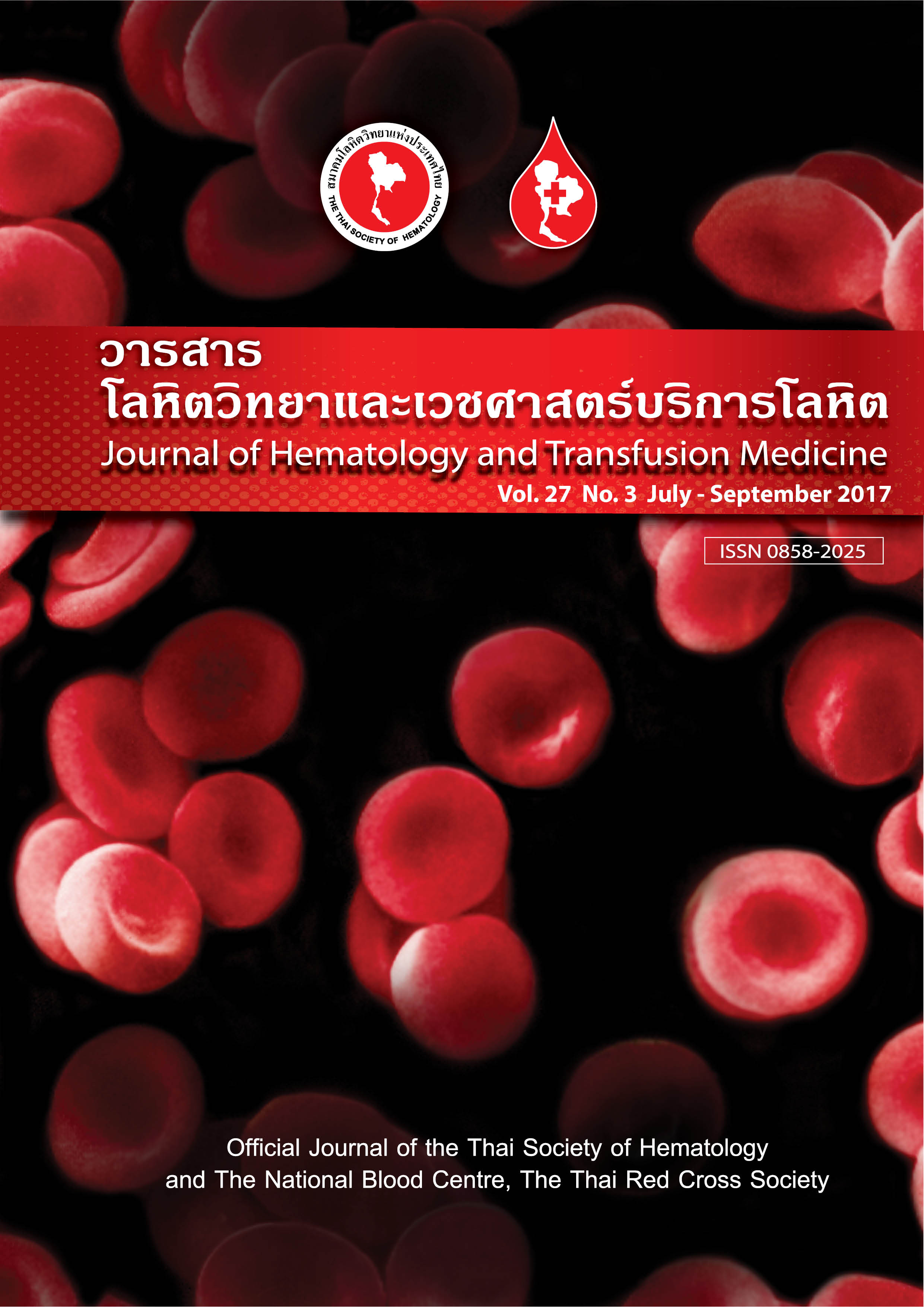Therapeutic response to immunosuppressive agents in Thai patients with transplant-ineligible aplastic anemia: possible predictive factors
Keywords:
severe aplastic anemia, immunosuppressive therapy, antithymocyte globulinAbstract
Objectives: Response to immunosuppressive therapy with its predictive factors suggests pathogenesis of aplastic anemia in different ethnic group. The aims of this study were a) to investigate the therapeutic response to antithymocyte globulin (ATG)-based immunouppressive therapy (IST) and b) to identify predictors of the response in Thai patients with aplastic anemia. Materials and Methods: We enrolled and reviewed medical records of aplastic anemia patients treated and followed up at Division of Hematology of our tertiary care hospital during April 1989-June 2012. Detection of PNH clone was done by high-resolution 2-color flow cytometric
analysis. Results: 121 patients were recruited. Three with no data of definite therapy were excluded. Sixty-one patients, with severe aplastic anemia (SAA) or non-severe aplastic anemia (NSAA) who required regular transfusion support, were treated with immunosuppressive agents (IST), either ATG alone or ATG with cyclosporine A (CsA). The 6-month overall response rates (ORRs) after the first and second courses of IST were 45.2% and 53.3%, respectively. The ORRs to rabbit-ATG and horse-ATG were comparable. With multivariate analysis, lymphocyte count of more than 1,500/mL was a good predictor of response to IST (OR 3.17, 95% CI 1.01-9.98, p = 0.048). The presence of PNH clone of RBC or PMN did not predict response to IST. Conclusion: Our study demonstrated therapeutic benefits of ATG-based IST in Thai patients with transplant-ineligible severe aplastic anemia. Lymphocyte count was a good predicting factor of response to IST.



